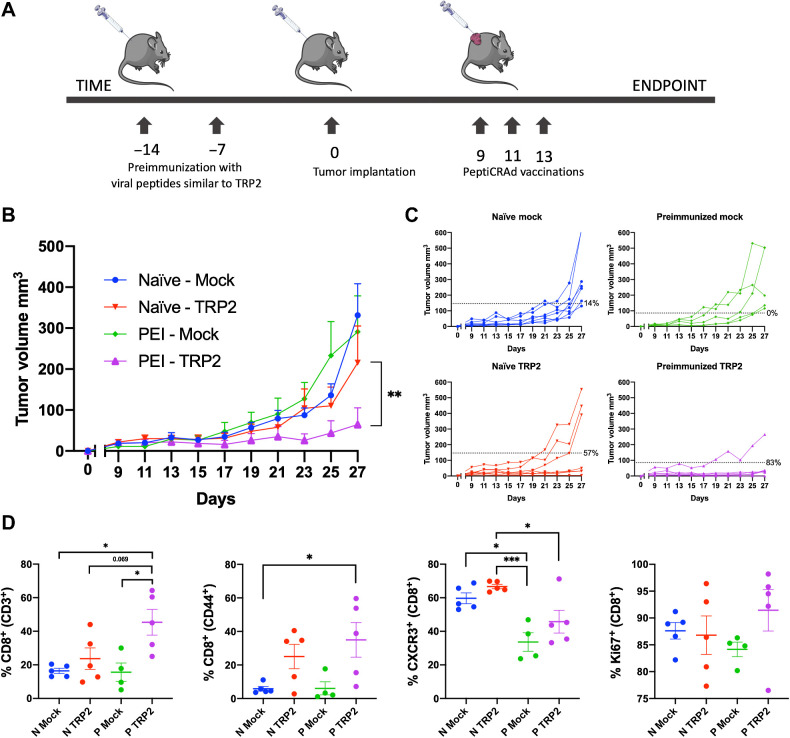Figure 4.
Preexisting immunity toward viral-derived epitopes mimicking tumor antigens increases efficacy of cancer immunotherapy. A, We preimmunized half of a cohort of mice with viral-derived peptides similar to TRP2180–188 identified using HEX. After preimmunization, all the mice were engrafted with syngeneic B16-OVA cells and mice that developed palpable tumors were randomized and treated as follows: PBS (mock; n = 8), PeptiCRAd-gp100 (no preexisting immunity for this peptide; n = 8), and PeptiCRAd-TRP2 (peptide with homologous preexisting immunity; n = 8). B, Average tumor growth shown as mean ± SEM of each treatment group. Statistical analysis by two-way ANOVA. C, Tumor volume curves of individual mice per each treatment group. The dotted line identifies the threshold of the therapeutic success rate and represents the median of the normalized volumes measured at the endpoint for the naïve groups and the preimmunized (PEI) groups, respectively. D, Flow cytometry analysis of tumors collected at the endpoint (N stands for naïve, and P stands for preimmunized). The gating strategy used for the analysis is shown in Supplementary Fig. S1. P value is represented as follows: >0.05 (ns), ≤0.05 (*), ≤0.01 (**), ≤0.001 (***), ≤0.0001 (****).

